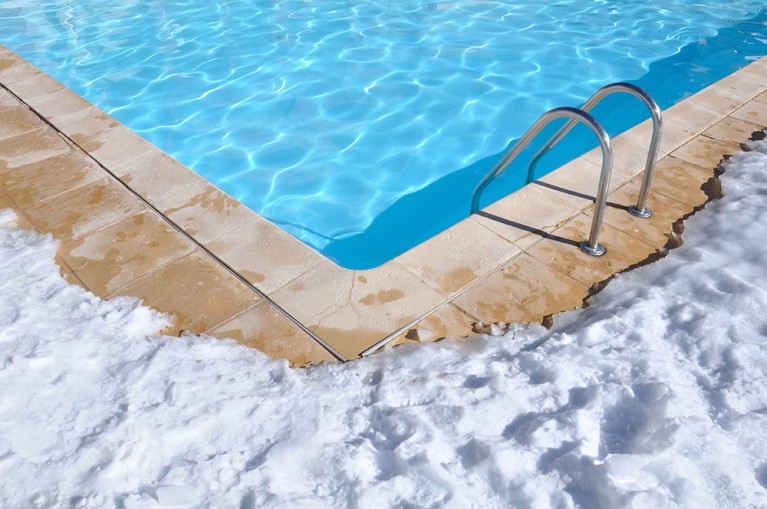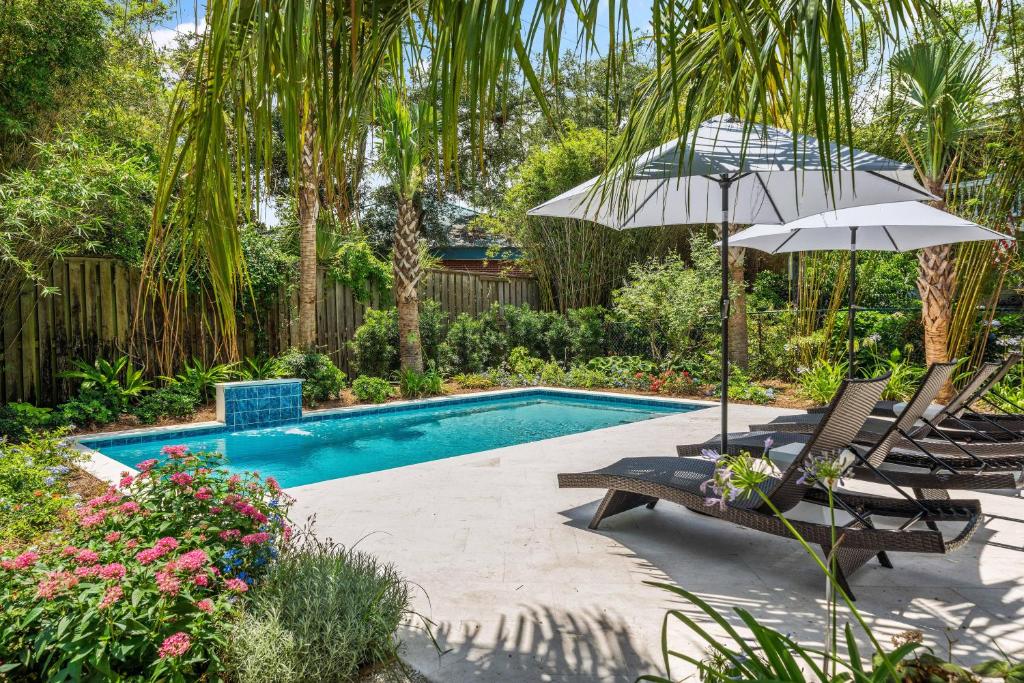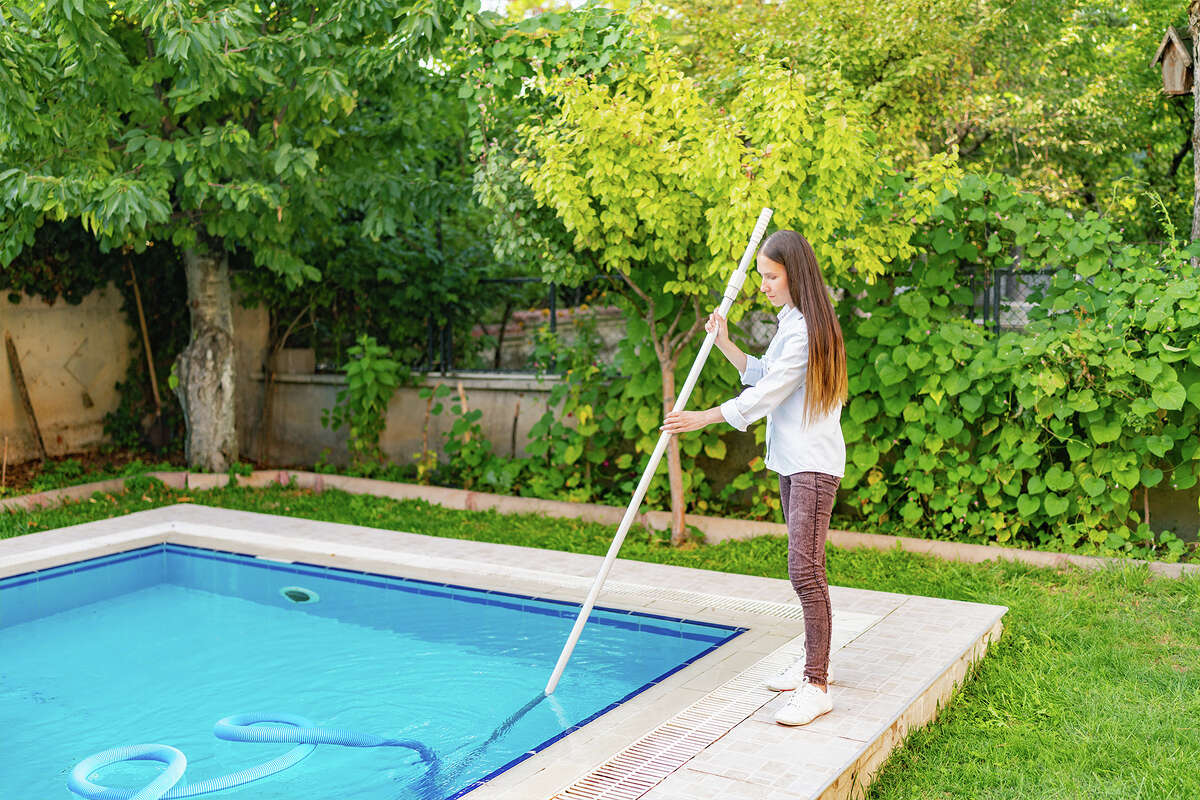If you thought closing the pool for the winter season only applies to public swimming pools, too bad. Closing the pool applies to all swimming pools, including private ones.
Closing the pool for winter protects the pool and pool equipment as the freezing temperatures can cause pool pipes and equipment to crack. Closing the pool also maintains the water health all winter, saves money on electricity costs, and gives you a break from pool maintenance, among others. Of course, it also makes your yard safer. Therefore, it’s a routine you should never miss.
Fortunately, it’s not too difficult to close the pool. The following is a step-by-step guide on how to close a pool with minimal fuss. First though, a few things.
What’s the Best Time to Close the Pool?
The best time to close your pool depends. However, if your local temperatures typically stay below 65°F during the winter, it’s best to wait until temperatures drop below that point. However, if your offseason temperatures generally hover above 65°F, you can test and balance the water chemistry throughout the offseason to keep the water clean until reopening time.
Requirements
The first step is to get the proper gear/tools and chemicals. Thankfully, you probably already have most of the gear on hand. And, if you must buy additional items, always remember that you’ll use them again and again for a long time.
Getting the Right Gear
The items you need are:
- A winter pool cover.
- Pool brush.
- Winter pool plugs for return jets.
- An air compressor.
- A skimmer plug.
- Winter Pill.
- Pool cover pump.
- Tools for removing accessories like ladders.
Getting the Chemicals Ready
Generally, you need water test strips, chlorine/sanitizer, pH increaser, pH decreaser, calcium hardness increaser, alkalinity increaser, algaecide, pool shock, cyanuric acid, pool enzymes, antifreeze for pools, and metal sequestrant. More importantly, make sure you have these chemicals in sufficient quantities.
How to Close a Pool in 9 Steps
Once you have the gear, tools, and chemicals ready, it’s time to close your pool. Here’s how to close a pool in nine easy steps.
Clean the pool
Attach the pool brush to a telescoping pole and thoroughly scrub the pool walls and floor, making sure to get into the nooks and crannies as best as you can. Consider using an algae brush is possible. Then manually vacuum all the area to remove the dirt and debris.
Test the water
You can easily test pool water using a test kit. Alternatively, take a water sample to the local pool store for professional testing. This will help you know the acidity and alkalinity levels, which is helpful for the next step.
It’s time to winterize
The first step here is to make sure the chlorine levels are good. Your pool’s chlorine levels must never exceed five parts per million (PPM). After confirming the chlorine levels, add one dose of algaecide, metal sequestrant, pool enzymes, Winter Pill, and antifreeze.
Shock the pool one last time
The day or night before closing, add the pool shock to your pool, following the manufacturer’s instructions. Generally, you need more pool shock if you have more algae in the pool. Then run the pump overnight to disperse the shock throughout the pool. You want to test the water the following day to ensure that it is balanced.
Lower the water level
Removing some water during the winter protects the pool from freezing and overflow. Ensure the water is below the tile border if you intend to use a vinyl liner to cover it or the bottom edge of the skimmer if you intend to use a non-vinyl liner. The easiest way to lower the water level is by pumping to waste. However, remember that you may need to periodically check the level and remove even more water if you experience a rainy winter.
Clean the pump and filter
How to wash the filter will depend on the type of filter your pool uses. For cartridge filters, remove the filter, wash it with pool filter cleaner or muriatic acid, rinse with running water, and dry. However, use sand filter cleaner for sand filters and diatomaceous earth (DE) filters.
Blow out the lines
Skip this step if you live in a warmer region where temperatures don’t drop to freezing point. Otherwise, you need to blow the lines to remove every trace of water to guard against freezing and potential bursting. You need a professional for this step.
Remove, clean, and store away pool accessories
Storing away pool accessories, including the ladder and rails, protects these accessories from damage due to prolonged exposure to chemicals. Additionally, it allows you to cover the pool completely to prevent debris and pests from entering the pool.
Cover the pool
The final step is to cover the pool. You can use a regular winter cover or use a pool safety cover. Pool safety covers are a tad more expensive because they protect your pool from elements. Whichever the case, keep the cover clean at all times and use a pool pump to remove pooling water.
That’s It!
Now you know how to close a pool like a pro. However, don’t hesitate to call true professionals if you’re not confident in your DIY skills.






